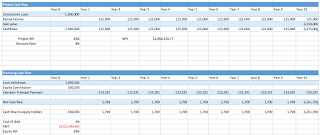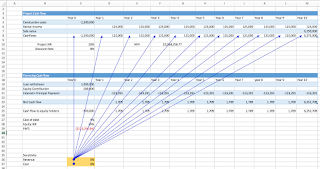If you work in real estate research, you most probably understand the significance of vacancy rates and absorption rates when deciding on real estate projects. Albeit, not many real estate investors have a subtle understanding of these two metrics. The purpose of this article is, therefore, to provide a vivid distinction between the use of vacancy rates and absorption rates in real estate.
Let’s start by simple definitions. Generally speaking, the VACANCY RATE is the percentage of built space in the market currently unoccupied or available for rent. The vacancy rate is determined by considering all the available space for lease and dividing it by the total space in the defined market. to illustrate, let's assume a particular market has 12,500sq. ft. of retail space. Currently, only 625 sq. ft. of retail space available for lease in the market. We divide 625/12,500*100= 5%. We conclude that this market has a 5% vacancy rate for retail units.
Vacancy Rate= current available space in the market / total number of space in the market *100
Calculating the vacancy rate of a defined market has ample implications. It is often an indicator for developers when to enter or exit the market. If vacancies in the defined market are low, then there is potential demand for new space, which serves as a sign for developers to enter the market and vice versa. Furthermore, lenders also use it for underwriting and feasibility analysts use it to calculate expected returns on a potential project. They take the gross projected revenue and deduct the vacancy rate to determine the effective rental revenues.
Now, let's focus on the absorption rate. The ABSORPTION RATE is the rate at which homes sell or rent in a given area during a given period of time. In simplistic terms, it is the time (usually defined in months) it would take to sell/rent the currently listed properties in a specific market. Absorption considers both construction of new space and demolition or removal from the market of existing space. It represents the demand over a specified period, contrasted with supply.
We calculate the absorption rate by finding out how many properties are currently available in a specific market. Then, we find out how many property types have been leased or sold (absorbed) within a defined period, we divide the available by the absorbed, and then we have the absorption rate.
Absorption rate= total number of homes available in the market/ the average number of sales per month
To demonstrate, let’s say there is a total of 120 class-A office spaces in the Downtown Dubai region. After closely observing the market for the last month, we are able to deduct that 40 spaced of class-A office spaces were rented in the area during that period. In accordance with our formula, we divide 12o by 40, which is 3. Therefore, we conclude that there is a three-month supply of class-A office space in the area- A relatively healthy market.
So what can a real estate developer or investor use this information for? Let’s say you’re a typical investor that wants to lease their Downtown class-A office space 3 months of going into the market. What do you do? If the rent per square foot of class-A office space in the area ranges between $40-$55, you obviously don't list your property at the top end of the range. Rather, you position your space at a discount. In this case, $40 per square foot would guarantee your property will be one of the 40 leased within the next three months.













